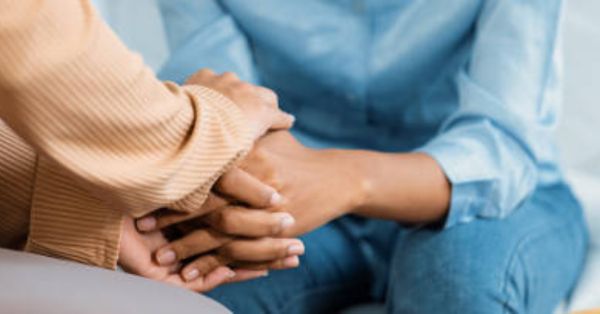Relationship Green Flags vs. Red Flags: The Signals You Should Never Ignore

Relationship Green Flags vs. Red Flags: The Signals You Should Never Ignore – If you’ve ever been swept off your feet by someone only to later wonder, “Why didn’t I see that coming?” — you’re not alone. Relationships are a bit like walking into a room with dim lighting: sometimes things look better than they are, and sometimes the warning signs are right there… but we’re too caught up in the sparkle to notice.
With Facebook Dating and other online platforms bringing so many people into our lives so quickly, it’s never been easier to fall fast — or fall for the wrong person. But here’s the thing: relationships don’t just fall apart out of nowhere. They unravel slowly, thread by thread, and often there were signs — both promising and problematic — from the very beginning.
Read: Best Dating Apps for Serious Relationships in 2025
So let’s talk about those signs. The green flags that say, “Hey, this might be something real.” And the red flags that whisper (or sometimes scream), “Run. Now.” Whether you’re new to dating or trying again after heartbreak, knowing the difference could save you years of emotional confusion — and possibly even heartbreak.
Let’s dig into it.
What Are Relationship Green Flags?
Green flags are the subtle but powerful signs that someone is emotionally healthy and relationship-ready. Think of them as the opposite of red flags — they’re not flashy or dramatic, but they show up in small, consistent ways that build trust and create safety.
A person waving green flags won’t just tell you they care; they’ll show you — in ways that matter.
Here are a few of the biggest green flags to keep an eye out for:
-
They communicate openly and respectfully.
They’re not perfect, but they’re not playing games. If they’re upset, they tell you. If something’s unclear, they ask. There’s no silent treatment, no mind games, just honest dialogue. -
They take accountability for their actions.
When they mess up, they own it. No finger-pointing, no gaslighting, no disappearing acts. They say, “I’m sorry,” and you believe them — because you can see their actions backing it up. -
You feel safe expressing your needs.
You’re not scared to speak up. You’re not walking on eggshells or second-guessing how they’ll react. That emotional safety is a major green flag — and it’s non-negotiable in a healthy relationship. -
They respect your boundaries.
They don’t guilt-trip you for needing space, or push you to move faster than you’re ready for. Respecting your “no” is just as important as embracing your “yes.” -
Your friends and family feel good about them.
If everyone in your life is breathing a sigh of relief when you talk about this person, pay attention. Sometimes the people outside the love bubble can see clearly what we’re too close to notice.
And What Are Red Flags?
Red flags are the warning signs that something may be off — or even unsafe. They often show up early but are easy to dismiss because we want things to work out. We want the story to be romantic, not a cautionary tale.
But here’s the truth: red flags don’t turn green over time. They usually get redder.
Some common red flags include:
-
Love bombing in the beginning.
If someone is coming in hot — declaring you’re their soulmate in week one, sending extravagant gifts, and pushing for total commitment immediately — it might feel flattering, but it’s often a manipulation tactic. Healthy love grows steadily, not explosively. -
They make you feel small or insecure.
Whether it’s subtle criticism, sarcastic jabs, or comparing you to others — any behavior that chips away at your self-esteem isn’t love, it’s control. -
They avoid responsibility or always play the victim.
If every ex they talk about is “crazy,” every boss was “out to get them,” and they never seem to have played a part in past conflicts — run. Emotional maturity looks like reflection, not blame. -
They pressure you to move faster than you’re comfortable with.
A healthy partner respects your timeline. If someone is rushing you into physical intimacy, moving in, or meeting the family before you’re ready — take a step back. Pressure isn’t passion. -
They’re inconsistent.
One day, they’re all in. The next, they vanish. If you’re constantly confused about where you stand, it’s not your fault — it’s a red flag. Real connection feels stable, not like an emotional rollercoaster.
Why We Ignore Red Flags (And How to Stop)
Let’s be honest: most of us have ignored red flags at some point — especially when the chemistry is high or we’re tired of being alone. We want to believe in potential. We want to give people the benefit of the doubt. And sometimes, we’ve learned to normalize dysfunction, especially if it mirrors past relationships or even childhood dynamics.
But ignoring red flags doesn’t make them disappear — it just delays the heartbreak.
The key is to stay grounded. Keep checking in with yourself. Do you feel safe? Do you feel respected? Are you shrinking to make the relationship work? Your body often knows before your brain does. Listen to that discomfort. That tightness in your chest? That’s not love — it’s a red flag waving silently.
How to Spot Green Flags in the Early Stages
Now, green flags can be easy to miss because they’re not loud. They’re steady. Think of someone who follows through on their word. Someone who doesn’t make you guess what they’re feeling. Someone who makes you feel calm — not anxious.
Here’s how to tune into green flags early on:
-
Pay attention to how they show up, not just what they say.
-
Watch how they treat waiters, customer service workers, and strangers.
-
Notice how you feel after spending time with them — are you energized or emotionally drained?
Sometimes, the greenest flag is simply: you feel like yourself when you’re with them.
Can People Change Their Red Flags into Green Flags?
That’s a tough one. Yes, people can grow. But you’re not a therapist, and love isn’t rehab.
Someone can work through their red flags — if they’re aware of them, take ownership, and do the work consistently. But you can’t date someone’s potential. You can support someone’s growth, sure, but not at the expense of your peace, safety, or self-worth.
Here’s a good rule: If someone’s red flag is actively harming you, it’s not your job to stick around hoping it turns green.
In Dating, Both Flags Matter Equally
You need to look for both green and red flags. If you’re only searching for red flags, you might overlook a really good person who simply doesn’t have drama — and mistake that for boring. But if you only chase green flags, you might ignore some serious deal-breakers because the person seems nice.
Balance is everything. Pay attention to the full picture — the way someone lives, communicates, takes care of themselves, and shows up in relationships.
Dating is about discernment. You’re not just choosing a partner — you’re choosing your future mental health, your peace, your joy.
What Healthy Love Actually Feels Like
Let’s wrap this up with a truth bomb: Healthy love is steady, safe, and emotionally secure. It’s not the drama-soaked, rollercoaster kind of love we see in movies. It’s the kind where you don’t have to overthink texts. Where your nervous system relaxes. Where being yourself is enough.
You’re not left wondering where you stand. You’re not fighting to be heard. You’re not feeling like you’re too much or not enough. You’re simply being, and that is welcomed.
Green flags feel like home. Red flags feel like confusion.
And in the end? You deserve love that doesn’t make you question your worth.






